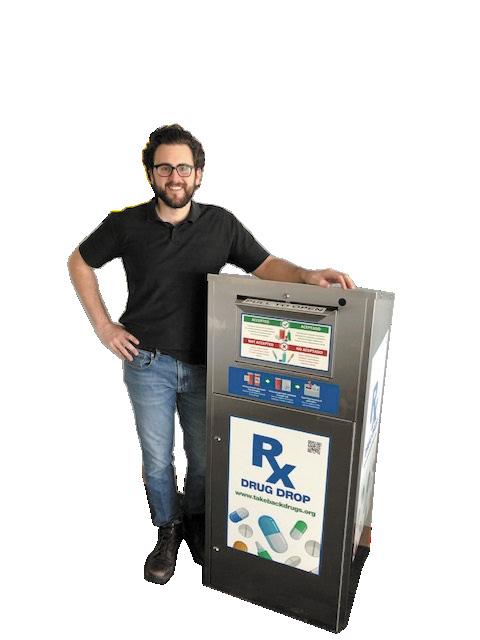
3 minute read
A Simple Solution
Learn how and why disposing of unused medication is important—and easy
by Thea Marie Rood
We have all had the experience: Maybe your spouse didn’t need the painkillers prescribed for recovery from surgery; maybe your teenager didn’t use all of his acne medication because of side effects; maybe your elderly grandparent passed away, leaving a shoe box filled with prescription drugs.
Where do you get rid of them safely?
And safely is the operative word here, because unused medications that are not disposed of properly can cause a myriad of serious public safety concerns.
For example, if unused medications stay in your medicine cabinet, they can fall into the hands of a child or teenager, who could accidentally overdose or begin an addiction. Criminals searching for drugs, especially opioids, may come into your house posing as a prospective homebuyer—or attempt a break-in.
If unused medications are thrown away in a garbage can, it is still possible that they may be illegally diverted. If drugs are flushed down a toilet or washed down the sink, they may end up in our landfills and waterways, harming wildlife and entering our drinking water.
Fortunately, there is an easy answer: Medication Take-Back Bins. These bins are safe and convenient disposal options for prescription and over-thecounter medications.
These convenient bins are a part of the California Statewide Drug Take-Back Program, which was funded by a $3 million grant from the Department of Health Care Services, and — specifically — its Medication Assisted Treatment program aimed at combating the opioid crisis. This is a prelude to the statewide bill, Senate Bill 212, which was signed into law by then-Gov. Jerry Brown on Sept. 30, 2018. SB 212 was a years-long effort by the California Product Stewardship Council and its authors, State Sen. Hannah-Beth Jackson and Assemblymembers Phil Ting and Adam Gray. In fact, statistics from up and down the state show that medication bins can result in a significant reduction in opioid deaths when bins are put in place.
“(The bins) are very popular here and we have one in every quadrant of the city now,” says Manuel Medrano, Chula Vista’s environmental services manager. “The great benefit is getting unused medications out of the medicine cabinet and not flushing them down the drain. It’s best to go through the proper disposal method where we know they are incinerated and there’s no possible way they can get in our water supply.”
Hosting a bin through this program is easy and free— installation, maintenance, disposal and promotion. Bins can be placed in pharmacies, hospitals and law enforcement agencies. People disposing of medications in these bins can also remain anonymous— no need to talk to anyone or answer any questions.
And best of all, the drugs are ultimately incinerated at a waste energy facility and converted to renewable energy, a complete win-win.
Snapshot of California opioid use
Opioid prescriptions in California are decreasing, thanks to a concentrated effort to fight this crisis. But a lot of work still needs to be done.
Drug-related overdose is the leading cause of accidental death in the U.S. More than three out of five drug overdose deaths involve an opioid.
But the numbers don’t stop there. According to the Centers for Disease Control and Prevention, for every person who dies of an opioid overdose...
12 people are admitted to a treatment program
25 are seen for complications in an emergency department
105 report opioid addiction or dependence
659 report using opioids for non-medical or non-prescribed purposes
In 2018, health officials tallied these opioid-related statics:
California: 2,428 deaths, 8,832 emergency department visits, 19.8 million prescriptions
San Diego County: 268 deaths, 769 emergency department visits, 1,519,978 prescriptions





